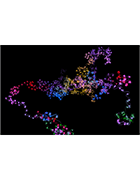Stochastic point processes and their practical value
Data scientists learn and utilize stochastic point processes for myriad pragmatic uses. Data scientist Vincent Granville explains this in his new book.
Poisson-binomial point processes are gaining considerable momentum, as their applications in the real world are numerous.
Point processes map a collection of data points, sometimes called events, that occur over a length of time. When collections of random variables model events that show the evolution of a given system over time, they are known as stochastic point processes.
Author Vincent Granville, a data scientist and machine learning expert who cofounded Data Science Central (acquired by TechTarget in 2020), wrote Stochastic Processes and Simulations to serve as a scratch course on stochastic processes. It covers more ground than traditional college courses or textbooks typically would. His approach is to introduce a new yet intuitive type of random structure for modeling mathematical points called a Poisson-binomial process.
Looking at the distinction between binomial and Poisson process examples will allow readers to better understand Poisson-binomial, which he uses as a gateway to understanding all stochastic point processes. A binomial distribution is used to model, for example, the probability of the number of successes we can expect from a given number of independent and identical success/failure trials (known as Bernoulli trials). A Poisson distribution in this context is attached to the number of points found in any domain -- say, a square -- under the assumption of independence among non-overlapping domains.
In Poisson-binomial processes, however, the point counts are location-dependent and thus not identically distributed nor independent. So, they are different from binomial and Poisson despite the other similarities discussed in this book. The name Poisson-binomial has historical connotations and generalizes the classic Poisson process: The point count distribution, rather than being Poisson, is Poisson-binomial.
They are especially useful for cellular networks, chemistry, physics, engineering applications, sensor analytics and modeling and optimizing sensor networks. Granville explains how they are also called perturbed lattice point processes, which he states is a more modern name that emphasizes these real-world applications as well as their topological features.
The first section of the book introduces the key concepts a data scientist needs to understand the formulas involved in Poisson-binomial processes. The second section discusses how to apply them. For example, subsection 2.1.2 depicts them via illustrations, and section 2.4 teaches readers how to produce data videos and illustrates several topics within the book.
Later sections further delve into the methodologies and principles with numerous resources, including: theorems, source code for developers, original exercises, videos, references and a glossary. Anyone interested in reading more about stochastic point processes can click here to download a sample chapter.







